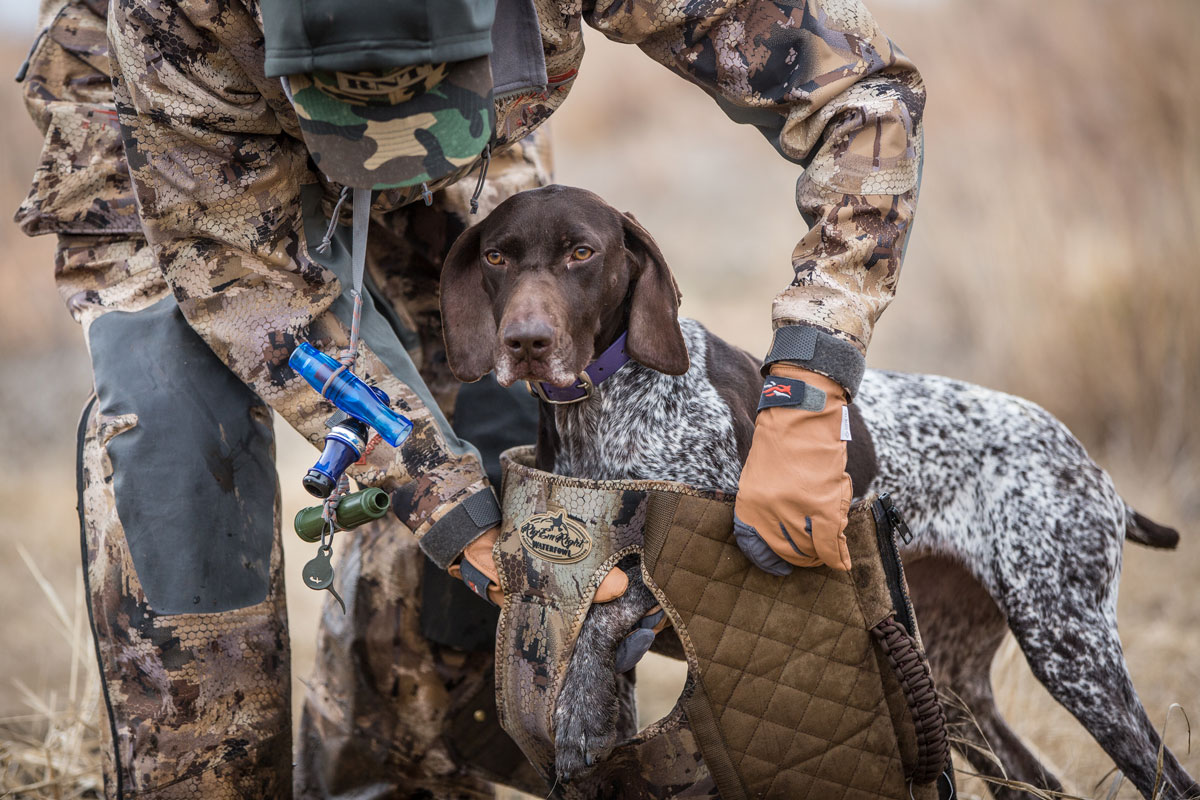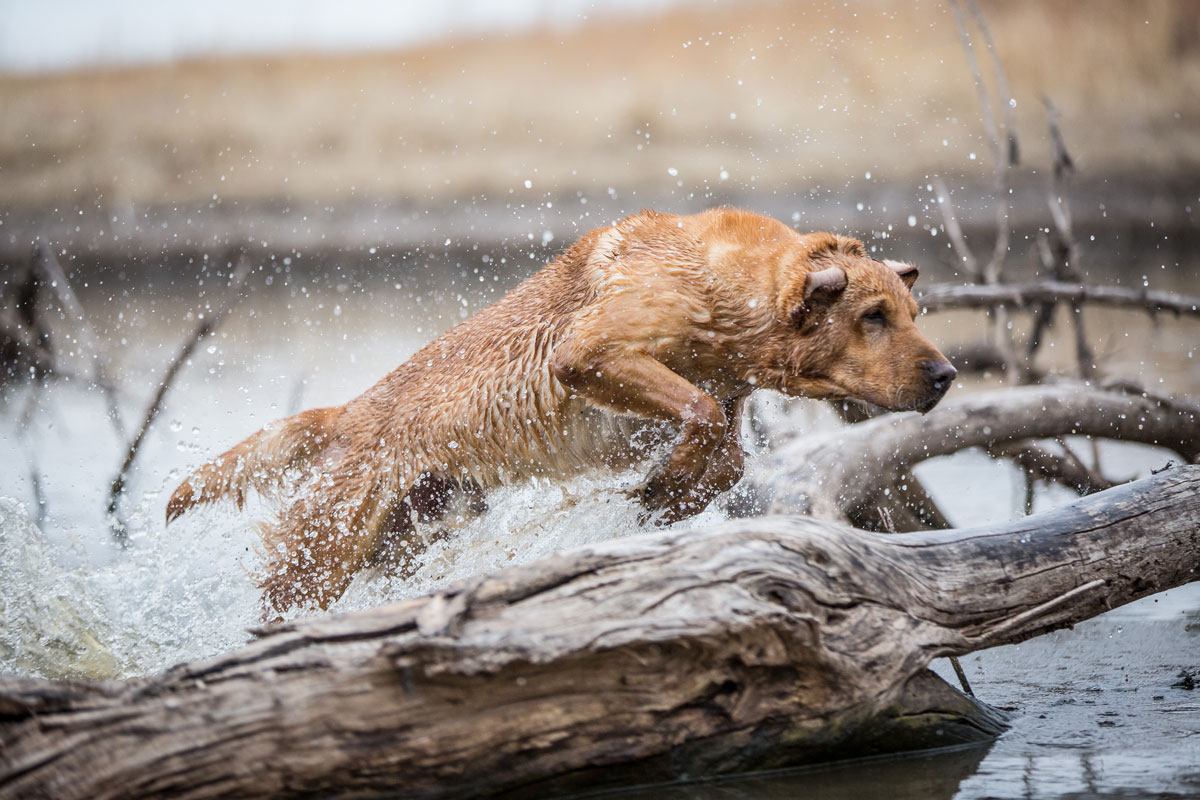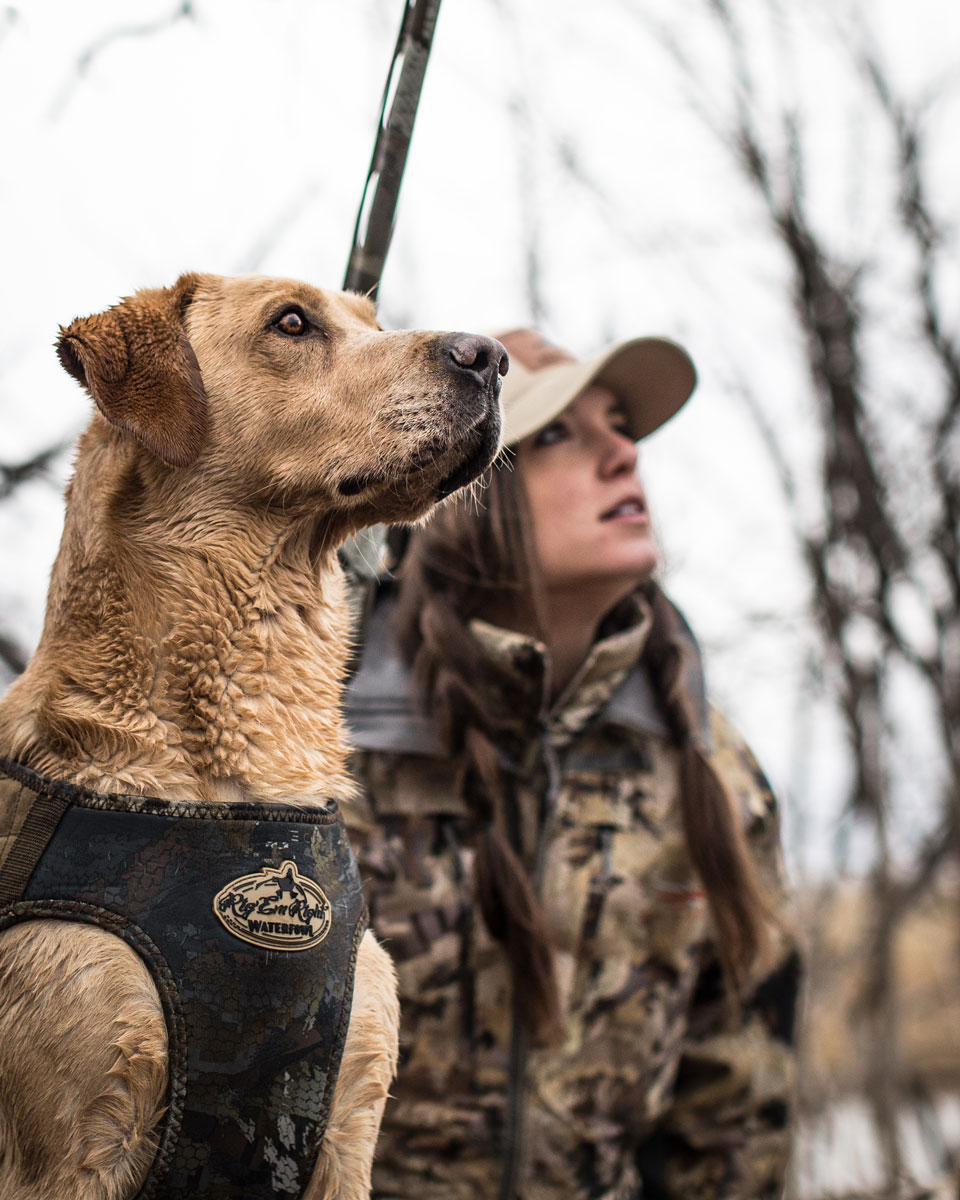SPONSORED CONTENT
Sporting dogs love to hunt no matter the weather or terrain. That’s exactly why it’s so important to prepare our canine athletes for what they will face in the field. Whether it’s an early-season heat wave or a late-season blizzard, here are a few tips to make sure your dog is ready for everything.

Performance in the Cold
In winter, one of the most important nutrients in a sporting dog’s diet is fat. Fat provides sustained energy and aids in preventing weight loss. Dogs that work in cold temperatures burn more calories than they do when running in mild temperatures. Keep their caloric needs in mind when filling up their bowls before and after a winter hunt.
“When it’s cold, it’s important to keep your dogs appropriately fueled,” says Dr. Ira McCauley, a Team Eukanuba veterinarian and avid waterfowl hunter. “In colder temperatures, dogs need adequate energy to run as well as to stay warm. Feeding a premium diet that is optimized for their activity level is very important.
“Along with nutrition, acclimating your dog to the cold is also important. Indoor dogs that spend the majority of their time in front of the woodstove are more prone to hypothermia than outdoor dogs. Gradually expose indoor dogs to the elements so they get used to the lower temps, wind, and cold water. The more time you spend with them in the weeks leading up to a hunt the better. A properly fitting vest is a plus, and his own blind blocks wind. If you do see early signs of hypothermia, don’t wait. Dry him off and get him out of the elements. Get him into your truck and crank up the heater. Wrap him in a wool or fleece blanket for extra warmth, and if you don’t have a blanket, wrap him in your jacket.”

Performance in the Heat
Heat can also put a significant strain on your dog. As temperatures increase, physical conditioning becomes crucially important. A few walks before opening day don’t cut it. Well before the season starts, begin a regular conditioning program, and gradually increase it as hunting season draws nearer. If your off-season diet differs from what you feed in-season, then make a gradual transition to the in-season diet at least 8 weeks before opening day.

“During the first hunts of the year, most people’s dogs aren’t in the best shape,” says Dr. McCauley. “That’s a concern, because poorly conditioned or overweight dogs are at a much greater risk of heat stroke and other heat-induced health issues.”
Humidity can also affect your dog’s performance. Most types of cover trap heat and humidity, so a breezy 75 degrees to you can feel like a stuffy 90 degrees to your dog.
Overlooked Factors
Our dogs work in varied terrain. Pheasant dogs beat through tangles of CRP. Retrievers use more muscle groups on swimming retrieves than in any other type of exercise. Pointing dogs run up vertical slopes consisting of loose shale. “Elevation is an often-overlooked factor,” says Dr. McCauley. “There is less oxygen available at high elevations, and your dog can feel the same effects as you, including altitude sickness.”
When hunting brings them through rough terrain and extreme weather conditions, our dogs work harder than when they run in a normal environment. That extra work requires extra calories, and their diet should reflect it. Take into consideration the conditions your dogs are facing, and feed them a premium diet tailored to their activities.
PHOTOGRAPHS COURTESY OF EUKANUBA SPORTING DOG.
Read our Newsletter
Stay connected to the best of wingshooting & fine guns with additional free content, special offers and promotions.




